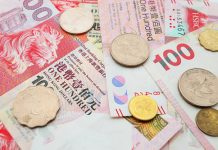US dollar rises as risk appetite fades
You can take your pick from the US recovery, the global recovery, the US debt ceiling, the ongoing China government clampdowns on the private sector, tapering nerves from the Fed and ECB, or just the plain old pandemic. It all adds up to a mish-mash of conflicting signals now, and in such markets, a flight to safety, meaning US dollars, is almost inevitable.
With that in mind, it was no surprise to see the US dollar rally once again overnight, the dollar index climbing 0.20% to 92.70, where it remains in Asia, which once again looks to be in possum in the headlights mode. The rise overnight leaves the index in the middle of its recent trading range between 92.00 and 93.20, which I still expect to contain the week’s trading.
Both EUR/USD and GBP/ISD eased overnight to 1.1820 and 1.3765, being unchanged this morning. Support in EUR/USD at 1.1800 is unlikely to be challenged unless the ECB is very dovish, with risks skewed to further rallies post-meeting. GBP/USD, on the other hand, broke a rising support line at 1.3800 on Monday, which has risen to 1.3830 as of this morning. With record worker shortages, compounded by Brexit, threatening consumer goods shortages, and tax hikes on the way, GBP/USD’s rally to 1.3900 last week, could be its best showing for a while.
The deteriorating risk environment globally is weighing on AUD/USD and NZD/USD, both falling overnight before easing another 0.10% to 0.7360 and 0.7090 in Asia. Further US strength and support failure nearby at 0.7345 and 0.7075 respectively threaten further losses to 0.7300 and 0.7000 this week, possibly more.
Asian currencies are trading quite mixed now. The Malaysian ringgit continues to hold near a recent high with USD/MYR at 4.1470 today. An attractive carry, a new prime minister and firmer oil prices continue to offset pandemic woes, a trend I am noticing across the currency space. Meanwhile, the South Korean won and Indian rupee have staged sharp reversals. USD/KRW rising to 1170.25 and 73.669 as of this morning, with KRW and INR down around 1.0% this week. Both countries have arguably, a greater delta to the global recovery, and both may be suffering fast money outflows to Japan and China markets this week. If China equities turn sharply lower once again and risk sentiment improves, both stand to post sharp gains.
With the global data calendar relatively light this week, currency markets have been left to their own devices and will always jump around on shifts in sentiment. Yesterday and today, it is negative, leading to US dollar strength, tomorrow it could be positive, leading to US dollar weakness. I expect the chop-fest to continue with no small amount of tail-chasing.













